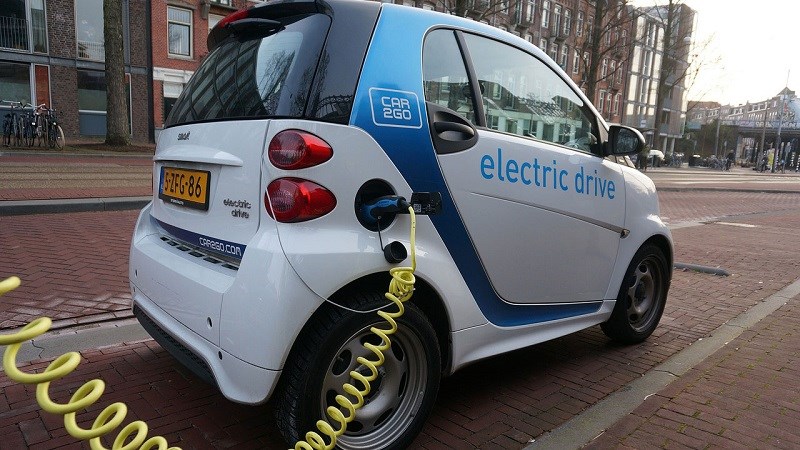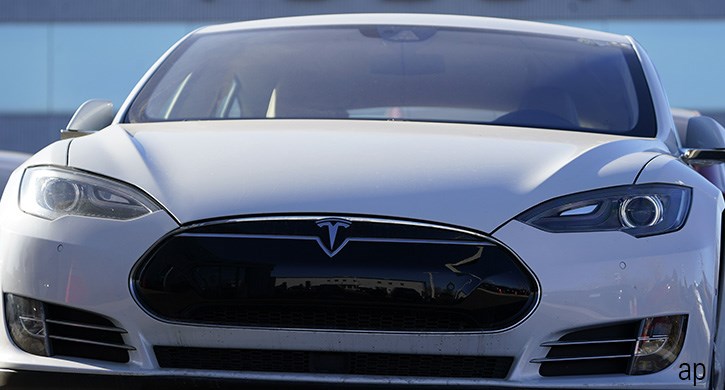
Morningstar Analysts forecast electric vehicles and hybrids to reach 30% and 37% global penetration rates, respectively, by 2030. It's 2025 that will be the inflection point when EVs and hybrids will begin to see more rapid adoption in China, the EU, and the US, which together represent nearly 70% of annual global auto sales.
According to the latest Morningstar’s Electric Vehicle Observer, increased battery electric vehicle adoption will evolve and transform multiple industries throughout the supply chain. Our analysts have identified the sectors that stand to benefit. They include:
- Auto OEMs (original equipment manufacturers) and parts suppliers
- Battery manufacturers
- Raw Materials (Lithium producers)
- Specialty Chemicals
- Technology Components
- Utilities
- Oil & Gas
Here we look at 12 stocks to tap into the EV trend. We have chosen to exclude Tesla (TSLA) from the short list, even though as the market leader with the best technology, we think Tesla could prove to be one of the best pure-play BEV investments if its competitors are unable to catch up to its technology.
BMW Group (BMW)
In 2020, BMW had 14 electrified models available to consumers, which accounted for 8% of its sales. BMW's narrow moat rating comes from its strong brand names and intellectual property. The firm expects fully electric models to annually average 50% growth through 2025, by which time it plans to have 25 electrified models, of which, 12 will be EVs and 13 plug-in hybrids. By 2030, BMW targets at least 50% of its global sales volume to be EVs. Stock Analyst: Richard Hilgert.
General Motors (GM)
In 2021, GM announced its ambition to sell only zero emission vehicles by 2035. GM does not have a moat as facing strong competition, it is nearly impossible for one firm to gain a sustainable advantage. GM plans to invest $35 billion on EV and AV development from 2020 to 2025, by which time it intends to launch 30 EVs and have 1 million annual EV sales. It also has its proprietary Ultium battery technology that it is selling to other firms such as Honda. Stock Analyst: David Whiston.
Ford (F)
Ford has finally accelerated its EV plans and the Mustang Mach-E looks like a real competitor to a Tesla Model Y. The 2022 launch of the F-150 Lightning, an EV version of Ford's most profitable vehicle platform, shows Ford is serious about EVs. Ford does not have a moat. In May, the firm announced it will spend over $30 billion on electric vehicles through 2025, which we expect to be for both passenger vehicles and commercial vans. Stock Analyst: David Whiston.
Volkswagen (VOW3)
Approximately 3% of VW's 2020 worldwide sales volumes were BEVs. Volkswagen does not have an economic moat. Moatiness from its premium and ultraluxury brands like Porsche, Bentley, Lamborghini, and Bugatti, is offset by mass-market Volkswagen, Skoda, and SEAT brands, plus the even more capital-intensive commercial truck business. During the next five years, Volkswagen is spending €46 billion to electrify its product portfolio. In 2025, the company expects BEVs to be 20% of total volume, growing to 55% to 60% by the early 2030’s. Analyst: Richard Hilgert.
BorgWarner (BWA)
BorgWarner makes motors, gearboxes, inverters, converters, battery management systems, on-board chargers, and software for EVs. The company also combines components and software into a complete integrated drive module. BorgWarner’s narrow-moat rating comes from a continuous flow of intellectual property and the switching cost. In 2030, BorgWarner targets around 45% of its revenue from EVs, up from around 3% in 2021. We expect revenue to average 2 to 4 percentage points of growth in excess of global light vehicle production as EV penetration outpaces declines in ICE. Stock Analyst: Richard Hilgert.
Continental (CON)
Through Vitesco, due to be spun off in September 2021, Continental's EV product portfolio includes motors, gearboxes, inverters, converters, battery management systems, on-board chargers, thermal management systems, and software. The company also combines components and software into a complete high voltage axle drive module. Vitesco targets more than €2 billion in revenue from electrification technologies in the mid-term, which we estimate to be 2025, up from €406 million in 2020. The firm has more than €13 billion in electrification technologies order backlog. We expect revenue to average 2 to 4 percentage points of growth in excess of global light vehicle production as EV-related growth outpaces declines in ICE. Stock Analyst: Richard Hilgert.
STMicroelectronics (STM)
STMicro is a key EV supplier. The company sells silicon-carbide (SiC)-based power semiconductors to Tesla for Model 3 EV Inverters. ST is investing heavily in SiC and gallium-nitride (GaN)-based semis aimed at EVs. ST's narrow-moat rating stems from decades of chip design expertise, as well as high customer switching costs because of costly re-designs. ST is well exposed to rising chip content per car, which we estimate should rise roughly 5% faster than global light vehicle sales, thanks to content gains per vehicle, including EVs. Stock Analyst: Brian Colello.
Johnson Matthey (JMAT)
Johnson Matthey is a new entrant in the field of high energy cathode materials for EV batteries with its flagship product, eLNO (enhanced lithium nickel oxide). We expect Johnson Matthey's first eLNO plant to be completed in 2022. Johnson Matthey has a narrow moat based on intangible assets and switching costs in its emissions catalysts, process catalysts, and precious metal services businesses. The company plans to rapidly expand eLNO capacity in Europe in the coming years. The first plant has a capacity of 10,000 metric tons per year. However, engineering on a second plant with a 30,000 metric ton capacity has already commenced. Stock Analyst: Rob Hales.
Panasonic (6752)
Panasonic is one of the largest EV battery makers globally, with battery manufacturing sites around the world to supply automakers. We estimate Panasonic's battery production capacity will grow six to eight times and the company will be able to achieve a cost advantage against competitors. However, batteries are still too small a contribution versus the larger consumer electronics business to qualify the whole company for a moat. Panasonic is investing heavily in the expansion of its battery capacity through the buildout of gigafactories, or manufacturing plants, that can produce an annual capacity of 1GWh of batteries. Analyst: Kazunori Ito.
Glencore (GLEN)
Glencore is exposed to EV's through material copper, cobalt, and nickel production and earnings. We think the company’s commodities trading and marketing operations would likely be worthy of a narrow moat on their own, based on cost advantage. However, Glencore’s mining assets on average are not moat worthy. Glencore has been relatively disciplined with capital allocation, and the growth outlook for the major EV exposed metals is generally flat. Cobalt is the exception and is set grow about 40% by 2022 from 2020 levels as production cuts initiated in August 2019 are reversed. Stock Analyst: Mathew Hodge.
Sociedad Quimica y Minera (SQM)
SQM's largest business is lithium production. Lithium will benefit from increased EV adoption as greater lithium demand will result in higher prices and profits. Our narrow moat rating stems from SQM's cost-advantaged lithium, iodine, and specialty fertiliser production. SQM operates the lowest-cost brine-based lithium resource globally. SQM is investing in expanding its lithium capacity over three times over the next decade, largely through low-cost brownfield capacity expansions. We view these investments as value-accretive given our favorable EV outlook. Stock Analyst: Seth Goldstein.
ExxonMobil (XOM)
Oil is primarily used to make fuels, including gasoline, which EVs do not require. Natural gas demand could rise, as it's used to generate electricity, but EVs will curtail crude demand. But vehicles have 10-15 years lifespans, so the transition will be slow. Meanwhile, producing wells will decline over time and more must be drilled. Firms at the low end of the cost curve can still thrive. ExxonMobil is our top pick within the sector (along with Schlumberger). We maintain our narrow moat rating, although we view Exxon’s competitive position as weakened. Stock Analyst: Allen Good.







:quality(80)/cloudfront-us-east-1.images.arcpublishing.com/morningstar/6BCTH5O2DVGYHBA4UDPCFNXA7M.png)


















